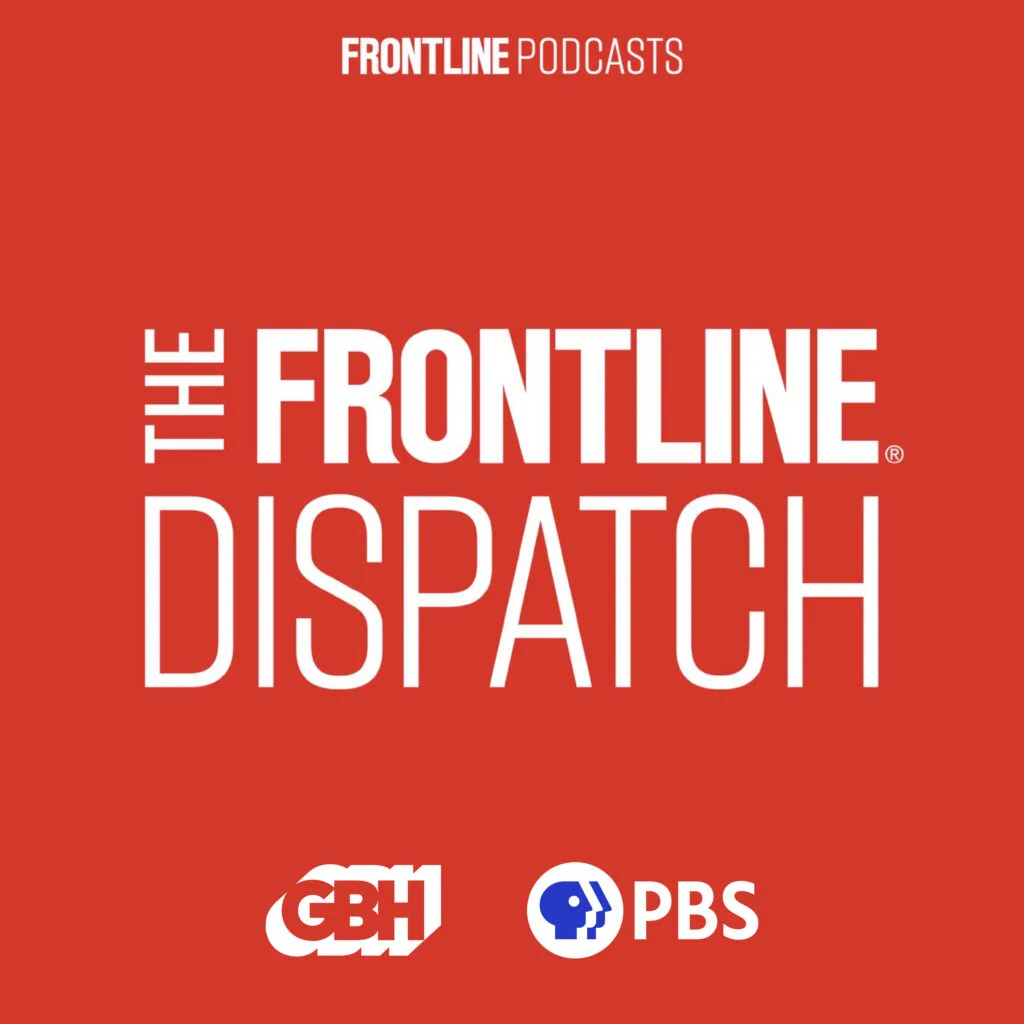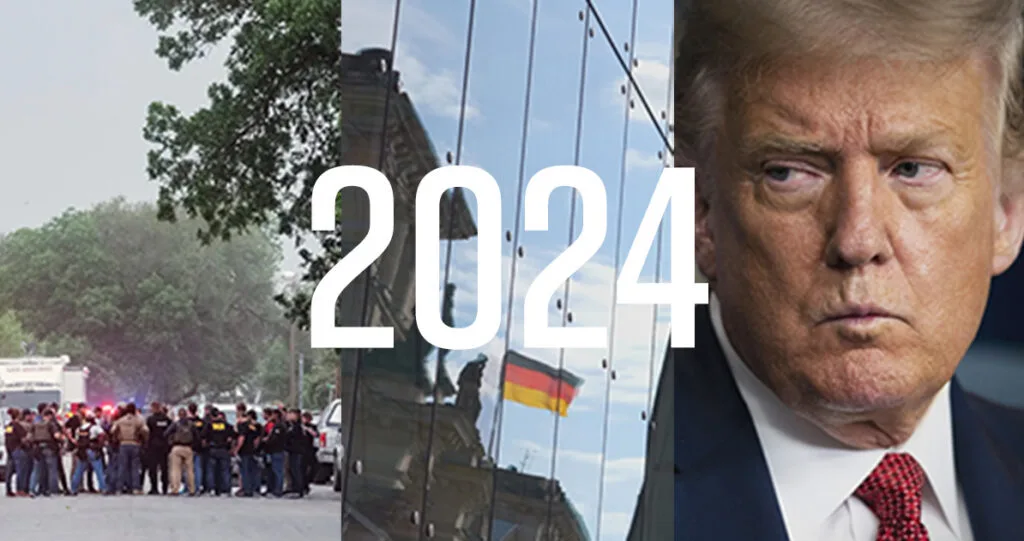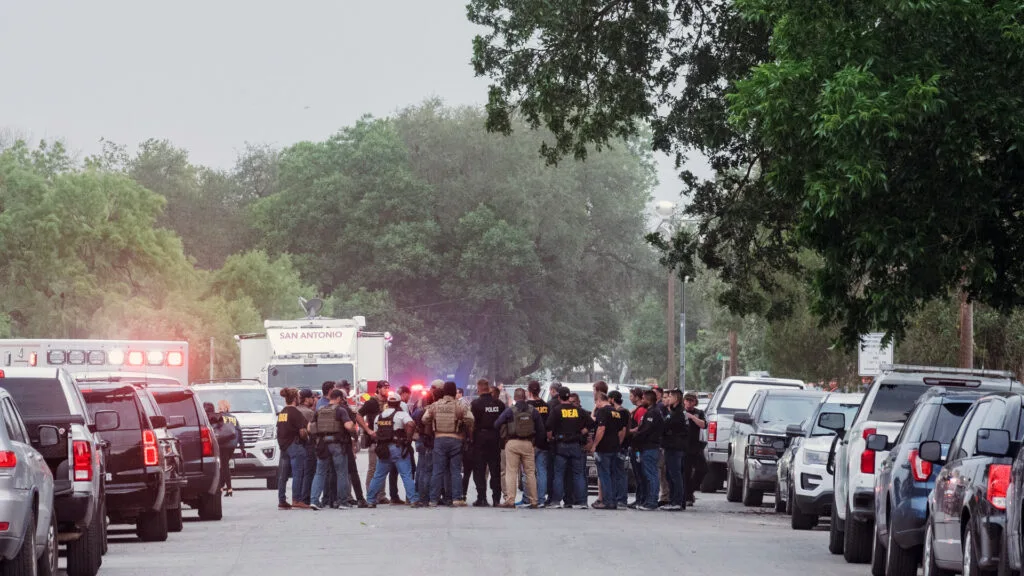911 DISPATCHER: Uvalde County, 911.
RANEY ARONSON-RATH: On May 24, 2022…
TEACHER: We have an active shooter at Robb…Robb Elementary, we have an active shooter…
RANEY ARONSON-RATH: …a gunman armed with an AR-15 style rifle entered Robb Elementary School in Uvalde, Texas.
KHLOIE TORRES: Send help. One of my teachers is still alive but they’re shot.
RANEY ARONSON-RATH: Like most schools in the US, the students and teachers there had practiced active shooter drills many times. They knew what to do. But a new investigation into the events of that day reveals that scores of law enforcement officers who responded that day did not.
OFFICER: It was a horrific thing and we lost no matter what.
RANEY ARONSON-RATH: Inside the Uvalde Response is a new film from FRONTLINE, produced in collaboration with ProPublica and the Texas Tribune. The film draws on real-time, first-hand accounts of what went on that day, and where the police response failed.
OFFICER 2: I don’t hear any screaming. Maybe this place is empty.
LOMI KRIEL: Children were instructed to be quiet. That is what their teaching is during these kinds of drills.
RANEY ARONSON-RATH: I’m joined by one of the journalists behind the investigation – Lomi Kriel, an investigative reporter for ProPublica and the Texas Tribune. I’m also joined by Juanita Ceballos, the film’s director. I’m Raney Aronson-Rath, editor-in-chief and executive producer of FRONTLINE, and this is the FRONTLINE Dispatch.
RANEY ARONSON-RATH: Lomi and Juanita, thank you so much for joining us on The Dispatch.
JUANITA CEBALLOS: Thank you for having us.
LOMI KRIEL: Thank you.
RANEY ARONSON-RATH: So of course the shooting at Robb Elementary School in Uvalde, Texas happened in May of 2022. It’s been about a year and a half since then. And this is actually our second documentary on the subject, and I was hoping that we could start with talking about why we decided to keep investigating the events of that day, even though it’s not exactly front page news anymore. So Lomi, let me start with you. What thoughts did you have about going into this again?
LOMI KRIEL: So I’m a reporter at ProPublica and the Texas Tribune. We’ve been investigating the response that day ever since it happened. And during the course of our reporting, we obtained more than two terabytes of investigative material through a confidential source. And we started using that material, which is just hundreds of hours of interviews, body camera footage, 911 calls, radio calls, photographic evidence, maps, to piece together some stories, including one that we did with the Washington Post looking at the medical response. But none of our work so far, and we believe no work thus far, had really put everything together comprehensively about kind of how those moments – that 77 minutes it took police to respond transpired that day— in part because there was just so much overwhelming material. And so we felt that we really wanted to do that.
RANEY ARONSON-RATH: Right. And one of the things that, Juanita, I would love for you to talk about is just the amount of time that went into watching the police officers and the people who were interviewed. I mean, first of all, tell us about that experience watching all those interviews. I know we talked a lot about it during that process.
JUANITA CEBALLOS: I mean, as Lomi said, we had a huge amount of evidence, starting with the body cam footage. We had about 38 body cameras, and they’re, you know, some are an hour long, others are two hours long, and basically that meant just watching them from beginning to end, and transcribing it, transcribing every single file so that we knew exactly, you know, what was said, but also like what you could see in the different body cameras. And on top of the body cameras, we had more than 300 after-action interviews with the officers who responded, and interviews with the children who survived and teachers. So we had a huge amount of evidence that, you know, we felt we had to review in order to put together something that actually shows what happened that day through the different voices of the people who were there that day.
RANEY ARONSON-RATH: Lomi, if you could just talk a little bit about what was most surprising to you as you’re going through all of this footage, hearing the testimony, hearing people who were on the ground that day. What was the sort of first reaction that you had?
LOMI KRIEL: So I think one of the things that was most surprising pretty early on and that formed a big part of both the story and the documentary is just how many officers said that they didn’t realize children were inside that wing, even though it was the middle of the school day on one of the last days of the semester, because it was so quiet. Officer upon officer, you can hear in the story and the documentary say that. And then conversely, children in their interviews, both with us, with investigators and on their pleadings to 911 dispatches for help, just say that they were instructed to be quiet, that is what their teaching is during these kinds of drills. And so that’s what they did. They all kept quiet, even though some of them were severely injured, shot multiple times, bleeding, you know. They stayed quiet. They didn’t make a noise. And so I think hearing that account, that contrast from the officers, from the children and realizing then that, you know, this is what we’re, we’re teaching children and teachers is their best defense, but that actually officers said they didn’t think children were there, and it took longer to help them.
RANEY ARONSON-RATH: If you could help me understand, what were the most significant findings of the investigation?
LOMI KRIEL: I mean, I think that, you know, we know that this was a failed response, and I think people struggle to get their hands around why, how this could all have gone so wrong, and what we do in both the documentary and story is really take you through there. For one, you know, officers thought children weren’t there, so it took them longer to respond. Secondly, no one was in charge. They treated it as a situation of a barricaded suspect rather than an active threat, which meant that, you know, they thought they could wait longer to go in there because they didn’t think people were inside with the gunman, even though, as we walk you through kind of in painstaking detail, you know, there were so many clues that should have made officers realize that children and teachers were hurt. Some of them were dying. There were more than two dozen state, local and federal agencies here, more than 300 officers. This failure was collective. It wasn’t just which had previously kind of been suggested by state leaders, the failure of a few officers. It was really a broad failure by many. And I think that should make all of us think, and certainly school officials, law enforcement officials about how we can improve this in the future to prevent that.
RANEY ARONSON-RATH: Right. I mean, Juanita, one thing that I was really struck by was the sort of continuity in the experience of the officers. As you were starting to think about structuring the documentary, talk about those revelations that you started to find in their interviews. Like that, that was something that really struck me.
JUANITA CEBALLOS: Yeah, so the first one was clearly that they believed, at least at the beginning, when they didn’t have any clear evidence that there were children and teachers in that building, is that the building was empty because they were so quiet. So when they had clues that there could be children in those rooms 111 and 112, a lot of them said that they didn’t have the right equipment to get into that room. They felt they didn’t have enough shields, that they didn’t have enough firepower to get in that room. The other thing that they also said is that, They believed the door was locked, and so they were all waiting for one key, one master key to get in that room. What we learned in talking with experts is that if the door is locked or if they believe that it’s really hard to get through that door, they should come up with alternative, alternative ways to get into that classroom, like going through a window. And that’s something that no one seemed to mention in the interviews that we reviewed. So I think those are the three main categories, just not knowing that there were children and then, like, feeling that they either didn’t have enough equipment or they just didn’t have a way to get into that room.
RANEY ARONSON-RATH: And that’s something very interesting about just having the ability to see these moments on video and in audio so that you’re actually experiencing what happened as opposed to what they tell you after happened. I mean, I think there’s a benefit to that so that further investigations can happen and further training can happen. And on that, what did we learn about the type of training and the level of training that these officers had?
LOMI KRIEL: So as part of our reporting, we requested the training requirements of all of the officers that were there. Unfortunately, all the federal agencies, which made up, um, you know, about 200 of the more than 300 officers there, declined to provide this for Customs and Border Protection, the DEA, so we don’t know what their training was that day. For the state and local officers, we were able to determine that of the 116 officers who responded before the gunman was killed, it was really all over the map. Um, the state police, Department of Public Safety, about 80 percent of them had, um, active shooter training previously —versus only about a third of the Uvalde County Sheriff’s Office that had that kind of training. And what we found was that most commonly officers had only taken it once in their careers, which experts say is not enough. This should be something that is routinely done so that, you know, officers know what to do. This is a perishable skill. Um, and we found actually that this is also pretty reflective of what is happening across the country in some ways, because there are so few states that require this continuous training after the police academy. In fact, only two, Texas and Michigan, require that by law. And Texas, that only happened after the Uvalde massacre. And so in the absence of, sort of, any legislation requiring this regular training, we found that there is this kind of patchwork of experience like what occurred at Uvalde.
RANEY ARONSON-RATH: What happened in Texas after this, and what does the training landscape look like now?
LOMI KRIEL: So after Uvalde, Texas —the Texas legislature— passed a law requiring 16 hours of active shooter training every two years for every officer in the state. That actually puts it by far in the lead of what is required by states across the country. You know, as I said, the majority, almost all of them don’t require this really by law after the police academy. Um, so, you know, that’s good for Texas, but it only happened after Uvalde and after, you know, obviously what’s considered to be one of the more flawed responses to mass shootings.
RANEY ARONSON-RATH: So, after you were done working on the documentary, the interactive, this collected piece of work, what kind of response are you seeing to our work?
LOMI KRIEL: We’ve heard a lot of responses from school leaders, from law enforcement leaders who say that, you know, this is frankly very concerning. I mean, I think one thing that makes this very different is that for prior mass shootings —Parkland, Pulse, others—we just don’t necessarily, for the vast amount of those cases, have this kind of information, both body camera footage, 911 calls, interviews with, with officers to actually know how those responses happened, right? Usually that information is kept from the public for years. If it ever comes out, maybe some of it will come out in a trial like in Parkland, but you just don’t have, the public doesn’t have, access to all this information. Usually, we’re kind of reliant on how law enforcement describes how the response played out. And so I think that makes this an important training lesson. So what school and law enforcement leaders have responded is both alarm, obviously. I think that that some of them have said they will study this to see how they can improve their training. We actually also got a call from a Uvalde medic who was there that day, and, and who had previously not wanted to talk to us. Obviously, a lot of first responders remain under investigation, but he just said that he thought that this was so accurate about how that day played out. So, I mean, I think, you know, we still don’t have the full investigative findings. You know, people in Uvalde and people in Texas, all across the country, are still waiting for answers from investigators, from the district attorney who’s investigating this response. So this at least is one comprehensive accounting of what happened that day, but we still all need the full findings to really know how law enforcement thinks it went on.
RANEY ARONSON-RATH: Yeah, that, that is, that is really a great way of sort of framing the future, right? The future questions that are now going to be asked. The ending of the documentary is one of the most haunting endings of any documentary I’ve ever worked on. And, I’ll share my thoughts after you share yours, but, Juanita, talk to me about why that ending.
JUANITA CEBALLOS: So, while we were going through the investigative materials, we found a phone call that a Border Patrol agent who responded to Uvalde made right after he left the scene. So, when he was in a car, he had picked up a body camera, and he didn’t seem to know that the camera was recording. So, he called the school where his two daughters go.
DAVID JOY: I need to talk to the principal as soon as I possibly can…
JUANITA CEBALLOS: He told them ‘I’m a border patrol agent. Uh, have you heard about Uvalde?’ And he basically said that he just wanted to share with the principal his concerns about the response in case they had a situation like that in the future in the school.
DAVID JOY: I want to be able to talk with somebody, just to give you some advice and stuff that kind of slowed us down a little bit that maybe you would be able to—God forbid something, God forbid something happen and y’all aren’t, y’all aren’t set up for it.
MONICA [on phone]: OK, let me send you to…
JUANITA CEBALLOS: For me personally, it was really striking to hear somebody —you know, he’s just leaving the scene— immediately recognize that, you know, mistakes were made and that things can be better and he wanted to protect his own. And so I think it’s, you know, a very natural moment that conveys what other officers said in their interviews but have not said publicly. And so that’s why, you know, why we wanted to use that and we wanted to use it at the end of the film as a conclusion.
RANEY ARONSON-RATH: So I’ll share with you both that my response was all of what you just said, and I had one other thought, which is why I wanted it to be at the very end, is that this is an ongoing issue that our country is facing. These types of situations have happened before. I hope that they don’t happen again, but they may. And for me, beyond the emotional moment that he was calling this woman to express his concern was this idea that this is a future looking idea as well. This is not a one-off. This is a situation that’s happened to school children across America before and can happen again. And it just left me feeling like that jagged edge of this is an issue that we’re going to keep covering. So… and we will. And I’m sure the Texas Tribune and ProPublica will as well. So, Lomi and Juanita, thank you both so much for being on the Dispatch. And it was wonderful work that you both did.
JUANITA CEBALLOS: Thank you.
RANEY ARONSON-RATH: Thank you to Lomi Kriel and Juanita Ceballos for joining me on the Dispatch. You can watch Inside the Uvalde Response on frontline.org, FRONTLINE’s YouTube channel and the PBS App. Inside the Uvalde Response was written and directed by Juanita Ceballos. It was produced by Juanita Ceballos and Michelle Mizner. Lauren Prestileo was a co-producer and the senior editor. This podcast was produced by Emily Pisacreta. Chris Anderson was our audio engineer. Maria Diokno is our Director of Audience Development. Katherine Griwert is our Story Editor and Coordinating Producer. Frank Koughan is our Senior Producer. Lauren Ezell is our Senior Editor of Investigations. Andrew Metz is our Managing Editor. I’m Raney Aronson-Rath, Editor-in-Chief and Executive Producer of FRONTLINE. Music in the episode is by Stellwagon Symphonette. The FRONTLINE Dispatch is produced at GBH and powered by PRX.










